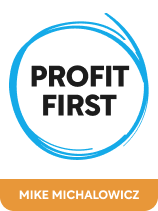

This article is an excerpt from the Shortform book guide to "Profit First" by Mike Michalowicz. Shortform has the world's best summaries and analyses of books you should be reading.
Like this article? Sign up for a free trial here .
Do you monitor your labor costs? How can you reduce your labor costs without compromising the business?
According to Mike Michalowicz, the author of Profit First, you should manage your labor costs like you manage your other expenses. He provides three guidelines for increasing labor efficiency and explains how to determine the number of employees you should have based on your company’s revenue.
Here’s how to lower labor costs using Michalowicz’s “keep, improve, or remove” framework.
Managing Labor Costs
Labor costs are a kind of expense, and you should treat them as such—in other words, thinking about your employees within the “keep, improve, or remove” framework. (Shortform note: When considering which employees to “remove,” Michalowicz emphasizes that you act decisively, fire who you need to, and then ensure your other employees that their jobs are secure. This allows you to keep morale and satisfaction up amongst your employees, which research suggests directly contributes to customer satisfaction.)
In order to determine each employee’s categorization and lower labor costs, Michalowicz recommends examining two points: how efficient your employees are and how many employees you need.
Ensure Your Employees Are Efficient
Often, cutting labor costs means getting better work done for your money rather than just firing employees—“improving” the expense instead of “removing” it. When managing your labor costs, Michalowciz suggests you first make sure that you and your employees are working effectively. He offers three different guidelines for this.
1) Consider Your Own Workload
Michalowicz recommends that as you manage your labor costs, consider the kind of work you’re doing—are you able to take on more work, instead of outsourcing it? Keep in mind that you should be doing the work of an employee when your business is small, and will slowly transition towards doing big picture organizational work as it grows. Don’t delegate all of your daily operational work to your employees early on—if you do, you’ll be paying someone else to do work that you could still be doing for your existing salary.
2) Systematize Your Labor
When managing the labor your employees do, Michalowicz advises that you make sure the way you want your business to run is clear to your employees. As an entrepreneur, you have a good idea of how best to do the daily work your business requires. Write it down, creating instructions or guidelines to help your employees do their work the way you want them to.
3) Determine Necessary Roles
Finally, go through the roles and responsibilities of each of your employees and determine which are not necessary for running your business or keeping customers happy. If an employee’s role doesn’t do either of those things, then Michalowicz says they need to be reassigned or fired.
| Efficient, Cohesive Labor While Michalowicz offers individual methods for making your existing labor more efficient, Peter Thiel (Zero to One) argues that you need a specific mindset to truly get the most out of your labor—one where everyone is excitedly pursuing a shared goal. Thiel explains how to ensure you and your employees have a shared goal, as well as how these goals can benefit your business. Maintain focused leadership: When you’re considering how to balance your entrepreneurial and employee responsibilities, Thiel advises you to think about your overall goals for your business, and to make sure that your large-scale entrepreneurial plans match up with your practical, day to day business goals. By making sure the two align, you’ll keep a consistent strategy that will be clear to you and your employees, which is important for making sure everyone is doing the work you want them to. -For example: When planning his business strategy, Steve the entrepreneur decides his goal is to provide quality products to a select group of clients. However, when running his business day to day, Steve’s goal is to get more customers in the door. Because these two goals conflict, Steve is going to get in his own way–his high-quality products will limit his ability to sell to lots of customers, and catering to as many customers as possible will limit his ability to operate in a profitable niche. Hire full-time: Thiel also says that hiring mostly full-time employees will help you better systematize your labor, for two reasons: First, employees working full time will quickly get used to how your business runs, as well as the work you want them to do. Second, they’ll all be more invested in helping your business succeed in the long term, since they stand to benefit more from its success. Clearly divide workload: When determining the roles necessary for your business, ensure that each employee has their own clearly defined role separate from everyone else’s. Doing so prevents redundancy in your labor, and helps you better evaluate your employees, since you can more easily identify the specific work they are doing. In addition, having clearly defined roles will prevent competition among your employees, which focuses them on the common goal of helping your business succeed (rather than the goal of being better than a rival, for example). |
Determine How Many Employees You Should Have
In addition to methods of ensuring your labor is efficient, Michalowicz recommends you save on labor costs by using your adjusted revenue as a guideline to determine the number of full-time employees you should have. By basing your employee count on your adjusted revenue, you’ll ensure you don’t spend too much money on payroll, while still having enough employees to complete all the work your business needs.
Michalowic advises that your business should generate 150k to 250k revenue for each full-time employee you have. This number also varies depending on how much you pay your employees and how much revenue a single employee generates—a business in an industry like tech which needs highly skilled laborers will generally have higher labor costs compared to its adjusted revenue, for example.
| Further Managing Your Labor Costs Michalowicz cites Gregory Burges Crabtree’s Simple Numbers, Straight Talk, Big Profits! for this ratio comparing labor costs to revenue. However, Crabtree also suggests that thinking about labor costs just in terms of how many employees you should have doesn’t guarantee efficiency, since it doesn’t take into account how much you should be paying each employee. To properly manage every aspect of labor costs, he says, you need to determine the maximum amount you can spend on payroll. By setting a limit, you’ll spend money on employees more efficiently and effectively—an argument similar to the Profit First tenet of doing more with less. Below, you’ll see the five steps he outlines for how to find your own salary cap, as well as an example business’s salary cap. 1. Start with your total revenue from the last year. (Example business has a total revenue of 1 million.) 2. Multiply this number by your ideal profit percentage. (Example business has an ideal profit percentage of 10 percent, so it calculates: 1,000,000*0.1=100,000.) 3. Subtract the result from your total revenue. (Example business calculates: 1,000,000-100,000=900,000.) 5. Subtract all non-payroll expenses from your result, including your own salary. (Example business spends 400,000 on non-payroll expenses, so it calculates: 900,000-400,000=500,000.) 5. The result is the maximum amount Crabtree says you can spend on payroll. (Example business has a salary cap of $500,000.) |

———End of Preview———
Like what you just read? Read the rest of the world's best book summary and analysis of Mike Michalowicz's "Profit First" at Shortform .
Here's what you'll find in our full Profit First summary :
- Why traditional business accounting methods don't work
- How to use the Profit First method to increase your business’s profitability and stability
- How to assess your business's current financial health






